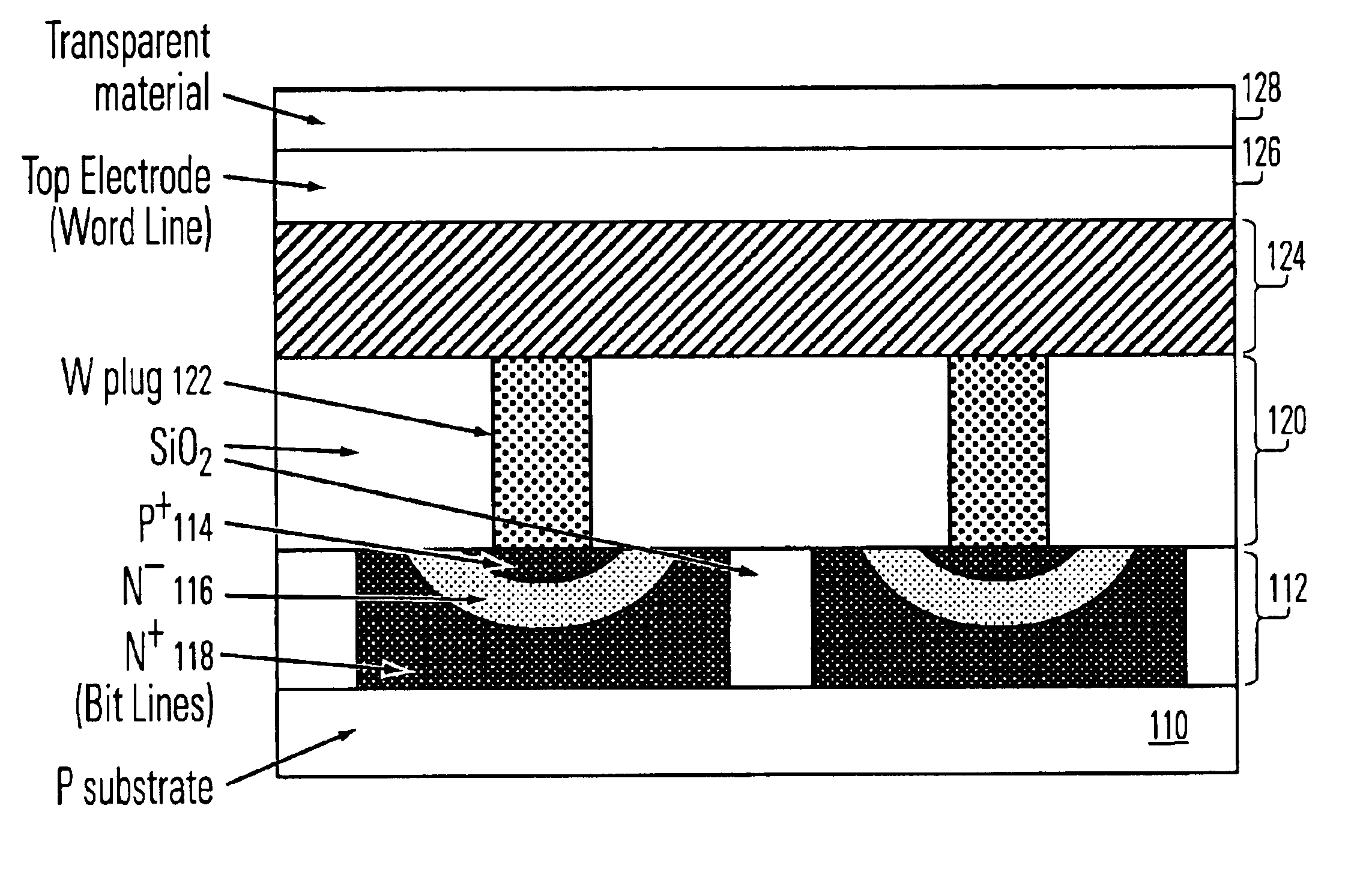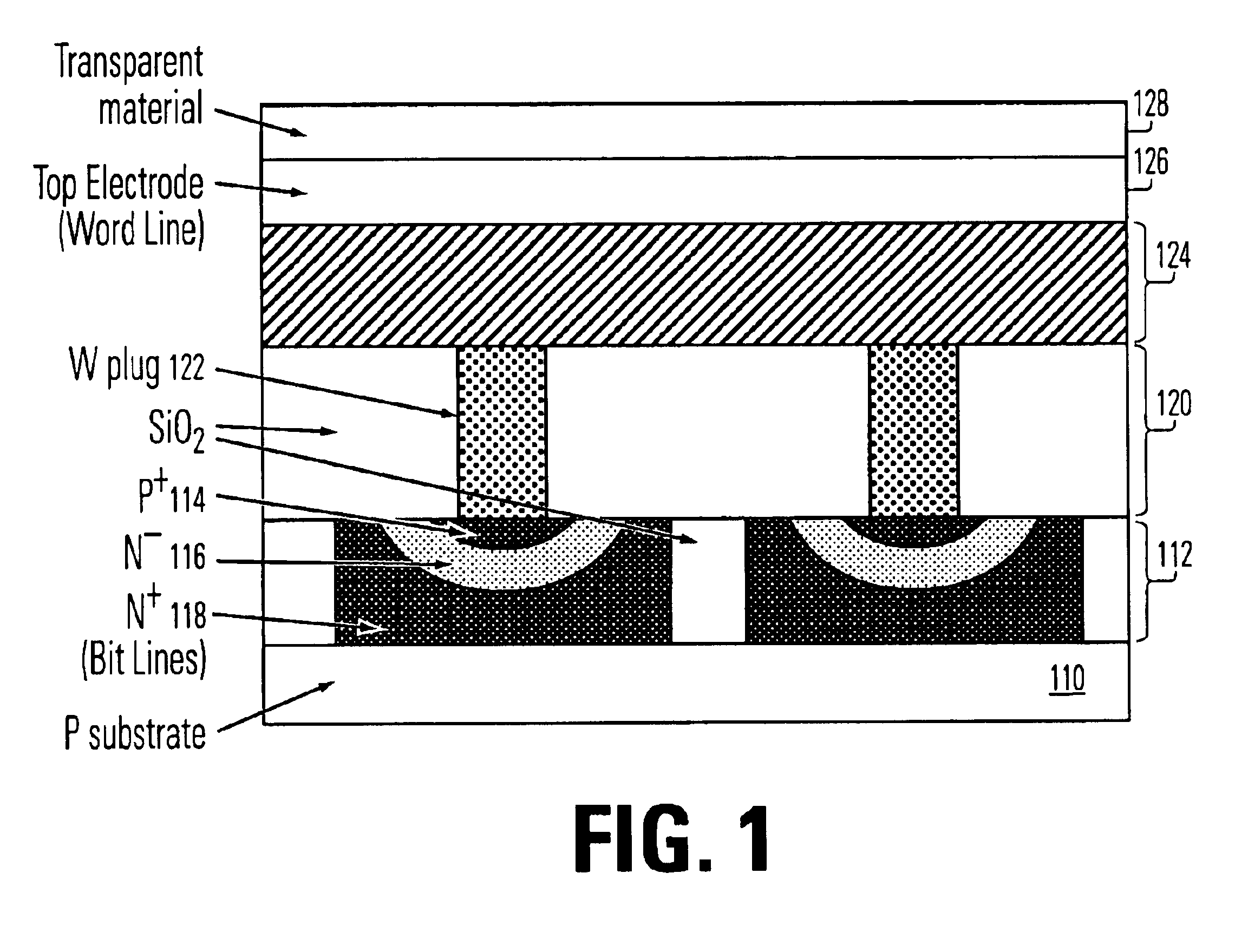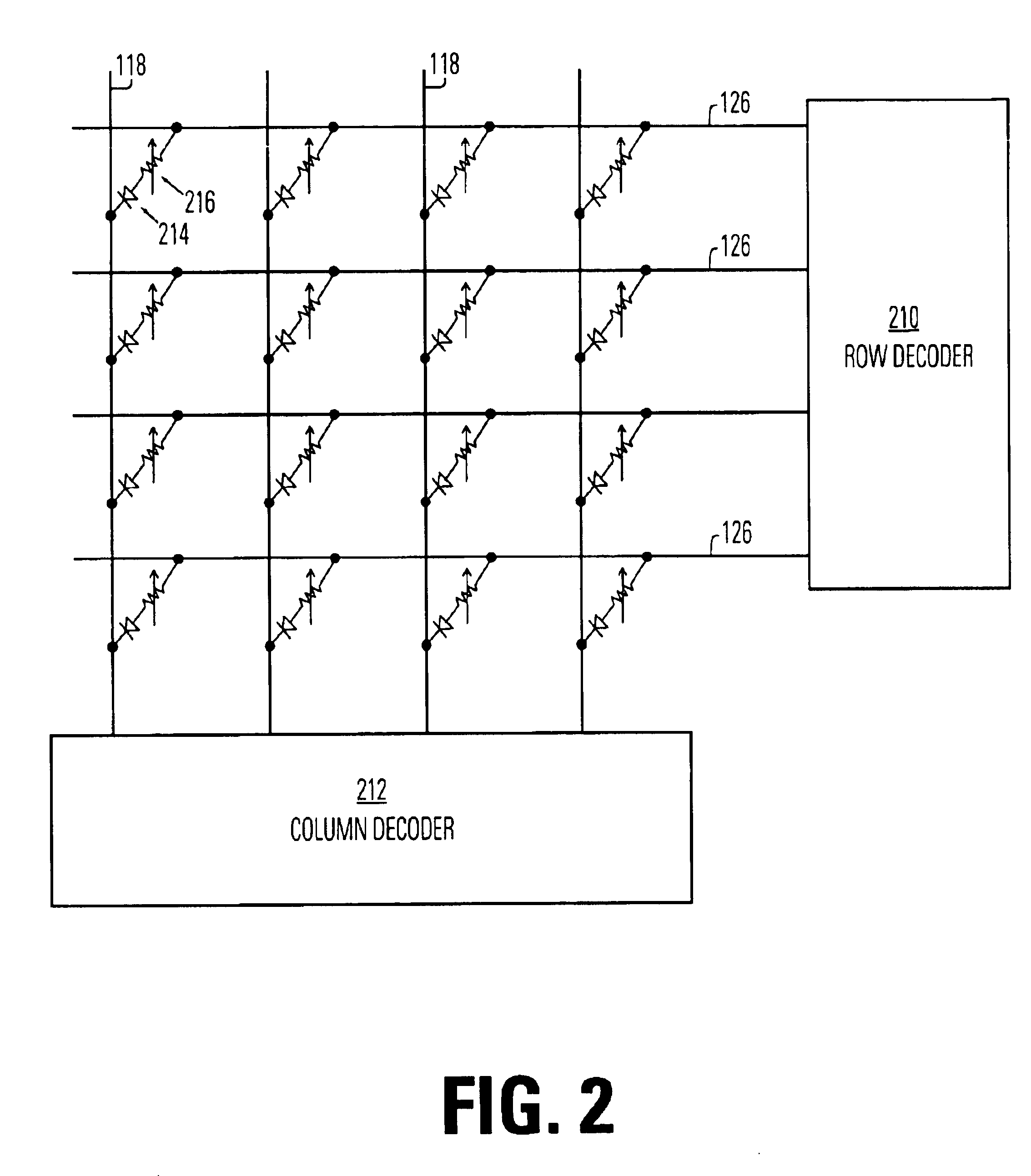Laser programmable electrically readable phase-change memory method and device
a phase-change memory and phase-change technology, applied in the field of non-volatile, high density, integrated circuit memory devices, can solve the problems of complex structures that can affect the reliability of memory devices, difficult to provide a source/drain current of more than 1 ma for a minimum size device, etc., to achieve the effect of simple electrical circuit, low power consumption, and not requiring slow and power-
- Summary
- Abstract
- Description
- Claims
- Application Information
AI Technical Summary
Benefits of technology
Problems solved by technology
Method used
Image
Examples
Embodiment Construction
The following detailed description is made with reference to the figures. Preferred embodiments are described to illustrate the present invention, not to limit its scope, which is defined by the claims. Those of ordinary skill in the art will recognize a variety of equivalent variations on the description that follows.
A chalcogenide material contains one or more elements from column six of the periodic table of elements. Many chalcogenide phase-change alloys have been described in technical literature, including alloys of: Ga / Sb, In / Sb, In / Se, Sb / Te, Ge / Te, Ge / Sb / Te, In / Sb / Te, Ga / Se / Te, Sn / Sb / Te, In / Sb / Ge, Ag / In / Sb / Te, Ge / Sn / Sb / Te, Ge / Sb / Se / Te and Te / Ge / Sb / S. In the family of Ge / Sb / Te alloys, a wide range of alloy compositions may be workable. The compositions can be characterized as TeaGebSb100−(a+b). One researcher has described the most useful alloys as having an average concentration of Te in the deposited materials well below 70%, typically below about 60% and ranged in general...
PUM
 Login to View More
Login to View More Abstract
Description
Claims
Application Information
 Login to View More
Login to View More - R&D
- Intellectual Property
- Life Sciences
- Materials
- Tech Scout
- Unparalleled Data Quality
- Higher Quality Content
- 60% Fewer Hallucinations
Browse by: Latest US Patents, China's latest patents, Technical Efficacy Thesaurus, Application Domain, Technology Topic, Popular Technical Reports.
© 2025 PatSnap. All rights reserved.Legal|Privacy policy|Modern Slavery Act Transparency Statement|Sitemap|About US| Contact US: help@patsnap.com



